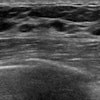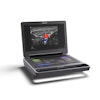Sunday, November 30 | 12:30 p.m.-1:00 p.m. | PHS130 | Lakeside Learning Center
Dynamic contrast-enhanced ultrasound can be standardized, which could open the door to more multicenter studies, French researchers have concluded.Although interest in the technology has grown, the problem of standardizing ultrasound scanning remains, according to study presenter Dr. Stéphanie Pitre-Champagnat from Institut Gustave Roussy in Villejuif. For this study, Pitre-Champagnat and colleagues validated a new method of standardizing the contrast mode of two different ultrasound scanners.
The study included two scanners with the same 3.5-MHz probe (Aplio XV and Aplio 500, Toshiba Medical Systems). Aplio XV served as the reference device; settings included the unit's mechanical index, gain, and acoustic power.
As a control method, the researchers used variations of the enhanced signal intensity for four concentrations of the SonoVue contrast agent (Bracco Imaging) -- ranging from 50% to 100% -- through a phantom of a single 2-mm tube.
Pitre-Champagnat and colleagues based their test method on variations of the enhanced signal intensity, with different absorptions of the ultrasound signal measured on a phantom designed with four thicknesses ranging from 1 cm to 4 cm.
They found that both methods required the same mechanical index, gain, and acoustic power settings for each device. The control method took 12 hours and had 15% variability, whereas the test method took three hours and had 7% variability. This led the team to conclude that the new method could make multicenter studies for dynamic contrast-enhanced ultrasound more feasible.




















